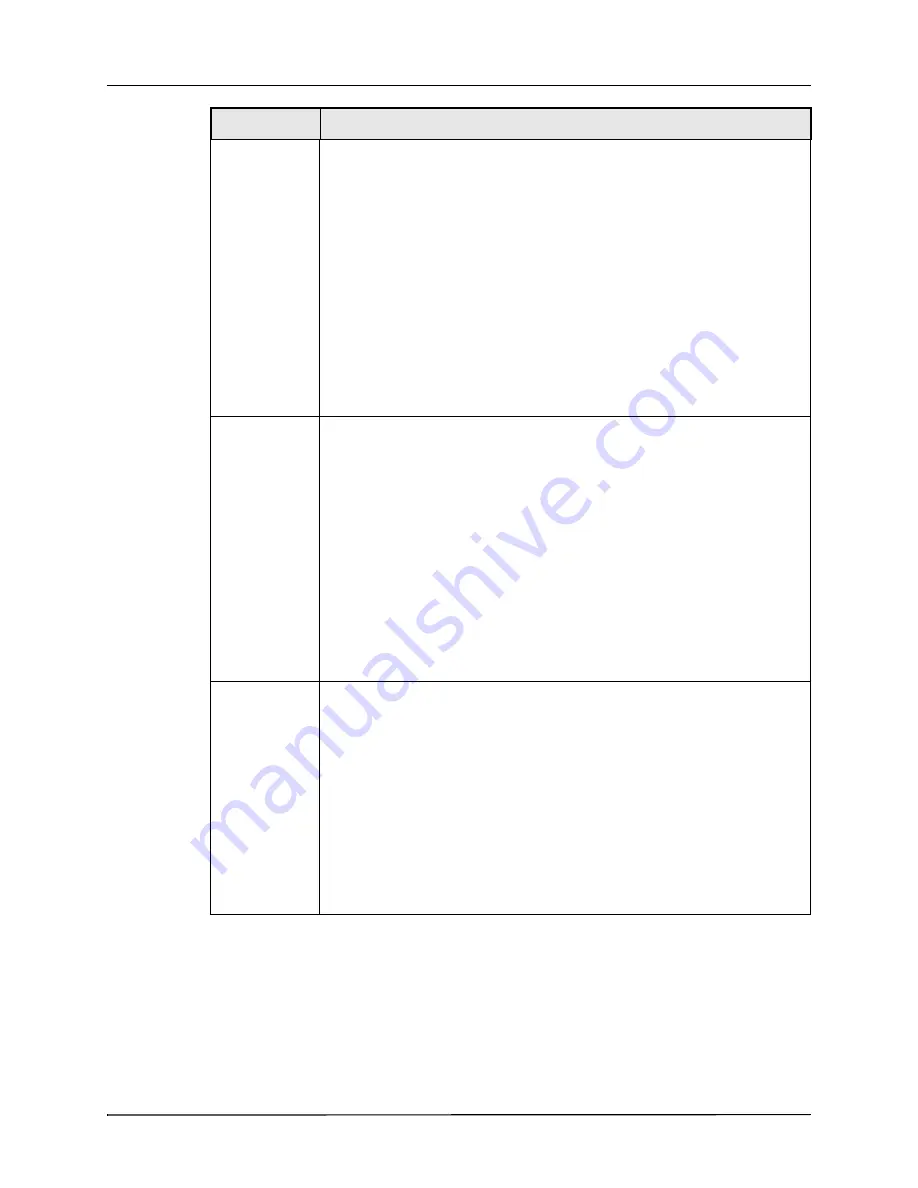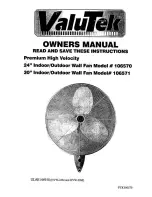
Alarms
5-32
www.zoll.com
9650-002360-01 Rev. A
3012
Self Check Fault - Pneumatic System: O
2
Valve
Alarm triggers when communication between the O
2
valve and SPM is lost, the
compressor is available to provide ventilation and the user has set the FIO
2
to
21%. While operating in this state the user should monitor the SpO
2
to ensure
that adequate oxygenation is maintained. If low flow O
2
is available it can be
entrained through the Fresh Gas/Emergency Air Inlet port using the optional O
2
reservoir. Maintain an acceptable SpO
2
by adjusting the O
2
supply up or down to
increase or decrease the amount of O
2
delivered to the patient. The user cannot
repair the O
2
valve, replace the ventilator and contact the service center for
additional information.
Mitigation/Info: Pneumatic System: O
2
Valve, Compressor Operation
Only!, Keep FIO
2
at 21%, Connect Low Flow O
2
, Monitor SpO
2
,
**Contact Service Center**
3030
Gas Intake Fault - O
2
Supply Operation
Alarm triggers when the Fresh Gas/Emergency Air Inlet is blocked so that the
compressor is not able to deliver breaths within ±10% of the current settings,
high pressure O
2
is available to support ventilation and the user has set the FIO
2
to 100%. To clear the alarm, clear the blockage and set the FIO
2
back to the
original value. If the blockage is cleared operation with the compressor will
restart. If the blockage is not cleared, the alarm will resound, set the FIO
2
to
100%, continue ventilation and ensure an adequate supply of O
2
. It is possible
for this alarm to be a false alarm that is triggered in a very high vibration
environment or if the device is not mounted correctly. If the alarm does not
resolve contact the service center for additional information.
Mitigation/Info: O
2
Supply Operation, Clear Blocked Intake, Reset FIO
2
to Previous, Monitor SpO
2
, **Contact Service Center**
3031
Intake Restricted
Alarm triggers when the Fresh Gas/Emergency Air Inlet is blocked but is still
capable of delivering breaths within ±10% of the current settings. This could be
caused by an external blockage or a dirty/wet external or internal filter. If the
blockage is cleared the alarm will automatically cancel. Refer to instructions for
changing the internal filters. If the problem does not resolve contact the service
center for additional information. On rare occasions, this alarm can be triggered
by a patient with a very high inspiratory demand. In this case decrease the rise
time or shorten the inspiratory time to increase the inspiratory flow rate.
Mitigation/Info: Clear Fresh Gas Intake, Check Filter for Moisture or Dirt,
OR, Manage Settings / Inspiratory Demand, **Manually Ventilate
Patient**
Service Code
Alarm Name/Mitigation/Resolution
















































